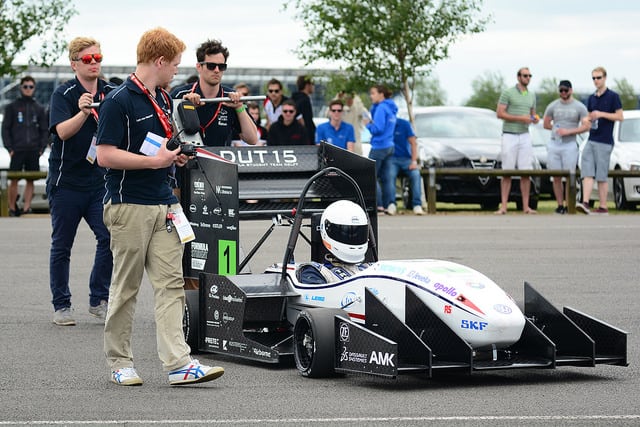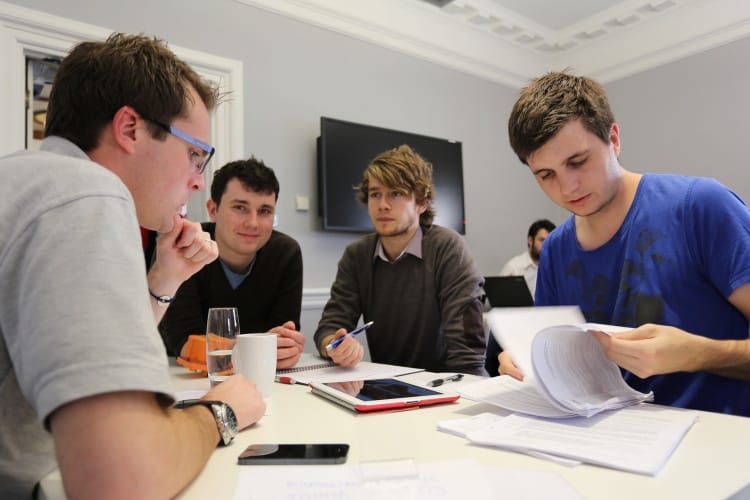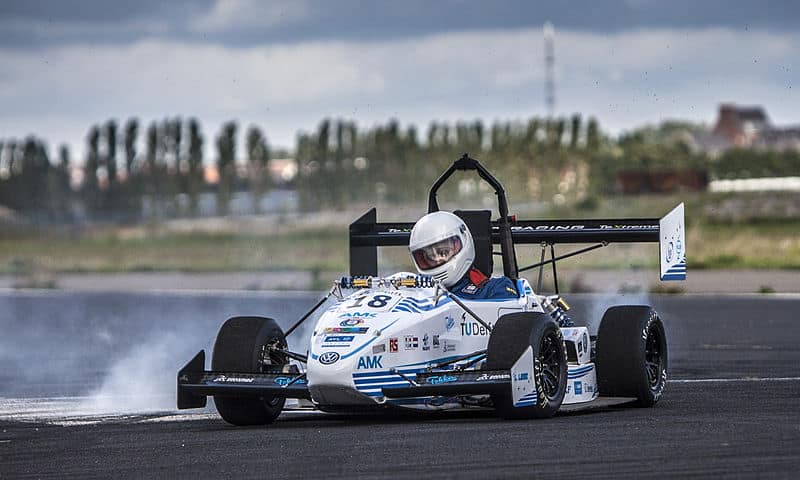
Formula Student (FS) can trace its roota back to the 1980s, when the Society of Automotive Engineers (SAE) in the UNited States started running its Formula SAE programme. Today, hundreds of teams from universities around the world compete, designing single-seat race cars and honing their engineering and project management skills along the way.
A breeding ground for the motorsport pioneers of tomorrow, FS has received strong backing from the automotive industry, as well as software companies such as MathWorks. It provides FS teams with design tools to develop and test their vehicles, as well as behind the scenes support to get the best out of the software. According to MathWorks’ Christoph Hahn, the relationship with FS has evolved over the last number of years.
“MathWorks has been involved with Formula Student on a corporate level for four years,” he tells me. “Before, there were local engagements, but now we are sponsoring competitions.”
These competitions include Formula Student programmes in Germany, the UK and the USA. Teams use MathWorks software to crunch data and run simulations, refining their vehicle designs. In his role as technical education specialist, Christoph provides support to the teams, assisting them with the software and running video tutorials that cover a range of relevant topics and showcase best practice from the top teams.
There is no overarching governing body, so Formula Student competitions in each country can have slight differences in regulations. Nonetheless, the rules are largely uniform across the three territories that MathWorks is involved in.
“Every country has an organiser running a competition, but most of them are under the same rules umbrella, so there is a common rule set,” Christoph says.
This means performance can be measured across the UK, American and German events - Formula Student’s three biggest competitions. The Sponsorship deals see MathWorks provide its MATLAB and Simulink software free of charge, but students also have access to a range of other tools.

“To be honest, MathWorks tools can’t do everything in a car development process, so there are for sure other companies involved,” says Christoph.
“Basically what every team is doing – I would say without exception – is data logging, data processing with MATLAB, and I think this is the foundation. It’s also good news for us because all the teams are using this functionality. The more advanced the teams are, the more they get into the specialty of our topics.”
Teams use the MATLAB software to explore and refine vehicle dynamics, looking at data around energy consumption, lap time prediction, and basing design decisions on that information.
“Broadly speaking, MATLAB is really data analysis and visualisation, and people who want to do that, they probably will use MATLAB,” explains Coorous Mohtadi, senior member of the Technical Specialist Team at MathWorks.
“Simulink is a graphical environment which is built on top of the capabilities of MATLAB, and it allows you to do modeling and simulation, and what we refer to as model-based design.”
Electric vehicles - which Christoph says are increasingly popular - can have control algorithms developed and tested in Simulink before being trialed in real life. For many teams there isn’t always a physical vehicle available in the early stages of development, so Simulink provides a virtual platform to test on.
“They are doing the testing of the algorithms with virtual vehicles,” continues Christoph. “We call that physical modeling because they are actually modeling a vehicle – the power train, wheels, suspension. So they are more and more looking into that because testing outside on the track is very costly and time consuming.”

One can see how important the overall Formula Student project is for shaping tomorrow’s engineers. Hands-on experience in a competitive environment expands knowledge and pushes capabilities, and the programs being used have many applications across industry and academia. Having been part of an FS team himself not so long ago, the benefits are something that Christoph can attest to directly.
In the future, he sees electric cars becoming increasingly prevalent. Already capable of matching combustion vehicles, he thinks their popularity in the competition will continue to grow.
“When I did Formula Student in 2006/2007, there was just combustion cars, cars running classical engines,” says Christoph. “Now, for example, in Formula Student Germany, we have 40 electric teams and 75 combustion teams. So they are definitely catching up, and they are competing at the same level.”
This was borne out by recent results in Formula Student UK, where electric cars took the top two spots, while combustion vehicles claimed the next three. Christoph tells me some of the top universities are now choosing to run two vehicles: one electric, one combustion. Though ostensibly part of the same overall team, there is often a healthy level of competition between those working on the different technologies.
“You have to end up with a race car that is competitive at the end of the season,” he says. “It’s a challenging task, but during the task you learn so much.”




Glasgow trial explores AR cues for autonomous road safety
They've ploughed into a few vulnerable road users in the past. Making that less likely will make it spectacularly easy to stop the traffic for...